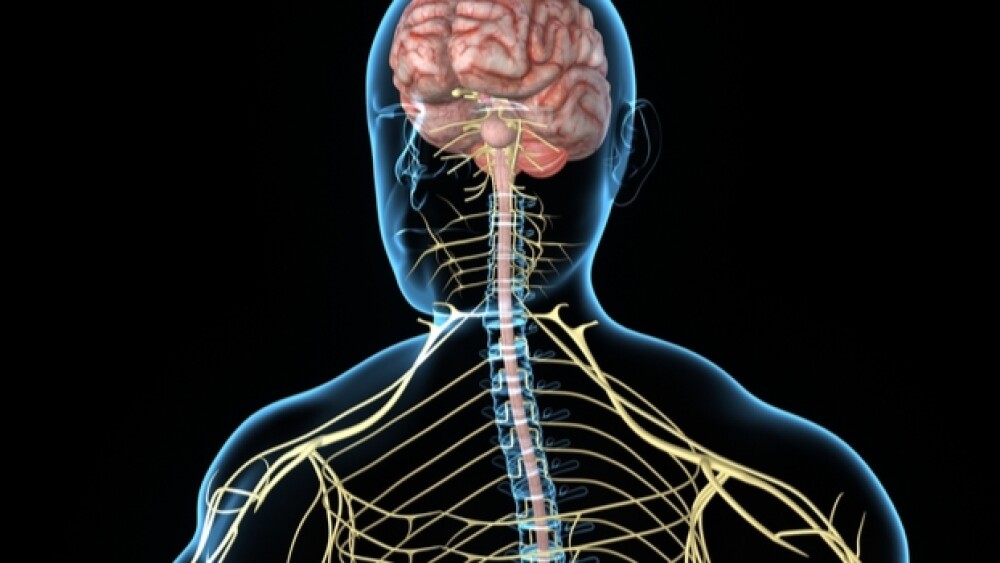Cerevance, a pharmaceutical company focusing on central nervous system diseases, has developed a new process for peering into the gene expression of specific brain cells.
Studying the brain and developing drugs against neurological diseases have been challenging for many reasons, including not fully understanding the pathology of neurological diseases like Alzheimer’s and Parkinson’s. Ideally, drugs that specifically target proteins involved in disease are desirable because they limit side effects. However, you need to know what protein to target before setting out to develop a drug against it. How do researchers determine what should be targeted within the complexity of the brain?
Cerevance, a pharmaceutical company focusing on central nervous system diseases, has developed a new process for peering into the gene expression of specific brain cells. Their Nuclear Enriched Transcript Sort sequencing (NETSseq) platform can leverage a technique to specifically sort and isolate specific types of brain cells to more closely study each type. By understanding gene expression in specific brain cells, researchers can develop drugs against targets specific to each type of brain cell, creating more targeted drugs that have less side effects.
To understand how their NETSseq platform is different, lets first look at how neurological drugs are currently developed and tested.
Other methods for studying brain cells
Both animal models and human brain cells (either grown in the lab or collected from a patient after death) can be studied using a few laboratory techniques, each with their own advantages and drawbacks.
Animal models, especially mice, are crucial to bridge studies in the lab to human clinical trials, despite there being discrepancies between animals and humans. These differences are obvious when studying the brain, as mouse brains are so small (smaller than a penny) compared to human brains, which makes it very hard to study specific regions of a mouse’s brain. Differences between mouse and human brains are also genetic, not just physical.
“Although many genes are expressed similarly in both mouse and human brains, hundreds of genes are differently expressed between the two,” Brad Margus, CEO of Cerevance, told BioSpace. This highlights the need to study human brains and brain cells (called neurons or glia) directly rather than relying primarily on an animal model to guide drugs into clinical trials.
Stem cells from a patient’s blood or skin can be used to make induced-pluripotent stem cells (iPSCs) that can be turned into brain cells. While this provides a way to study neurons, these brain cells are immature and young (because they have just been created from stem cells), making them quite different from the neurons in a mature or aging brain. Therefore, this method is not the most accurate for studying neurodegenerative diseases found in older patients.
iPSC-derived brain cells also lack the complexity and connectivity seen in a fully formed brain. Organoids (miniature organ-like 3D balls of cells) improve upon traditional 2D cell culture by having improved complexity and connectivity, making them an important steppingstone for research. However, they still aren’t quite as complex as a full brain, so directly studying the human brain is still the ideal goal.
In human brain samples, microarrays (chips containing many different genes, each of which lights up when a complementary sequence binds) have been used to study gene expression in the entire human brain or in certain areas of the brain. However, this is still a relatively crude analysis that links gene expression to brain regions, not necessarily specific cell types.
Another way specific cells in human brain samples have been studied was by physically cutting the desired cells out of immunohistochemically-stained slides of brain tissue using a laser (using a method called laser capture microdissection, or LCM). While LCM gives a pure sample of cells, allows for precise isolation, and provides RNA of high enough quality to sequence, the tissue must be stained and visualized under the microscope, limiting excision to the cells that can be immunohistochemically stained and seen clearly under the microscope.
Single cells (or their nuclei) can be isolated directly from human brain tissue and analyzed individually. The two main types of brain cells (neurons and glia) are separated by detection of broadly expressed fluorescent markers using fluorescence assisted cell sorting (FACS), which labels cells (or nuclei) with fluorescent markers and sorts them into groups based on unique fluorescent marker combinations. However, to decipher gene expression in more specific cell types, the RNA in each cell (or nucleus) must be sequenced and analyzed using cluster algorithms, which can identify gene expression patterns seen in certain cell types. Single cell analysis is also not very sensitive: only 2,000 of the highest expressing genes can be analyzed. This doesn’t allow for effectively identifying molecular signatures of neurodegenerative diseases or evaluating proteins made in lower amounts as potential therapeutic targets.
Being able to thoroughly study high-quality human brain samples on a large scale is ideal but has been difficult to achieve thus far. Cerevance’s NETSseq platform aims to address current limitations and improve how human brain samples can be studied.
The NETSseq platform
The NETSseq platform was originally developed by Nathaniel Heintz, Xiao Xu, and others at Rockefeller University. Highly specific probe combinations are used to efficiently sort specific cell types directly from a processed postmortem human brain sample using FACS. Neurons can’t easily be directly sorted using FACS because of their various shapes (generally only round cells can be sorted well), which is why FACS has been relatively unsuccessful in sorting neuron cell types before. However, NETSseq gets around this issue by removing the neurons’ nuclei, which is circular and can be sorted using FACS.
The nuclei (and remnants of endoplasmic reticulum, another portion of the cell attached to the nucleus) are labeled with specific antibodies (against nuclear, endoplasmic reticulum, or membrane proteins) or RNA probes (against cell-type-specific gene transcripts), creating unique marker combinations for each type of neuron nucleus. The neurons can then be separated by their unique marker combinations, allowing for larger scale isolation and analysis of each type of neuron, rather than single nucleus analysis.
Once isolated, the nuclei are sequenced to figure out the gene expression of the particular neuron type that the nuclei came from. Using machine learning and AI to analyze data, researchers can tease apart differences between healthy and diseased gene expression in each unique type of brain cell.
“NETSseq’s ability to identify all expressed genes in a neuron’s nucleus (about 10-12,000 genes) comes from the added sensitivity of pooling and analyzing thousands nuclei from a given neuronal or glial cell type in a single step,” said Margus. “This is especially useful for identifying low abundance targets.”
Another benefit of analyzing neuron nuclei is how robustly stable they are: RNA in the nucleus stays intact up to 48 hours after death, allowing for some time between death and collection/freezing of the brain tissue.
Cerevance has worked with 14 brain bank partners to assemble a collection of over 5,600 healthy and diseased postmortem brain samples from donors ranging from eight to 95 years old. This not only allows analysis of how gene expression changes over time due to aging, but also analysis of gene expression between healthy and diseased brain cells (such as Alzheimer’s or Parkinson’s brains). NETSseq can identify genes up- or downregulated in diseased neurons compared to healthy neurons, which could be potential drug targets. Differences in gene expression can be seen between the same cell types in different regions of the brain as well, indicating that cells in specific brain regions could be selectively targeted.
Cerevance’s current and future clinical trials
Currently, Cerevance’s lead compound, CVN424 for Parkinson’s disease, has completed a Phase 1 trial and is moving onto a Phase 2 trial slated to begin later this year. The Phase 1 trial assessed the safety of CVN424 in 64 healthy participants by delivering either a single dose (at 1, 5, 25, 75, or 225 mg) or multiple ascending doses (25, 75, and 150 mg). The trial was completed earlier this year and was deemed successful as it met its primary endpoints of no serious or severe adverse events and no significant changes in vital signs or laboratory values. A Phase 2 trial is expected to be initialized later this year with the goal of having results by next summer.
Parkinson’s disease is commonly treated with levodopa (L-dopa), the precursor for dopamine, because dopamine is produced less and less in the brains of Parkinson’s patients due to the death of dopamine-producing neurons over time. This lack of dopamine is what causes the characteristic tremors in Parkinson’s patients. The downside to long-term L-dopa use is that it can actually cause dyskinesia (abnormal, uncontrollable movements) because of the non-specific increase in dopamine levels it creates in the brain. In contrast, the small molecule CVN424 selectively targets a protein expressed in one type of brain cell (medium spiny neurons in the striatum) that are involved in one particular dopamine pathway (the dopamine D2 receptor-dependent pathway). The specificity of the drug means it can provide the beneficial effects of L-dopa without the side effects of long-term use.
Cerevance’s second lead drug, CVN417, focuses on addressing L-dopa-induced dyskinesia itself. The drug selectively inhibits a receptor only expressed on certain types of neurons (dopaminergic neurons in the midbrain and noradrenergic neurons of the locus coeruleus), which allows for better control of dopamine signaling and ultimately reduces uncontrollable movements caused by the nonspecific dopamine signaling from L-dopa. Margus noted that the ease of measuring tremors in the clinic will enable them to easily and quickly quantify if the drug is making a difference clinically. CVN417 is still in the pre-clinical stage undergoing IND-enabling studies but is expected to be in clinical trials in about 9 months.
Other preclinical small molecule drug discovery programs are being validated against targets identified via NETSseq, including those that may modulate neuroinflammation in Alzheimer’s and Parkinson’s disease, and targets expressed in genetically defined subsets of patients.





